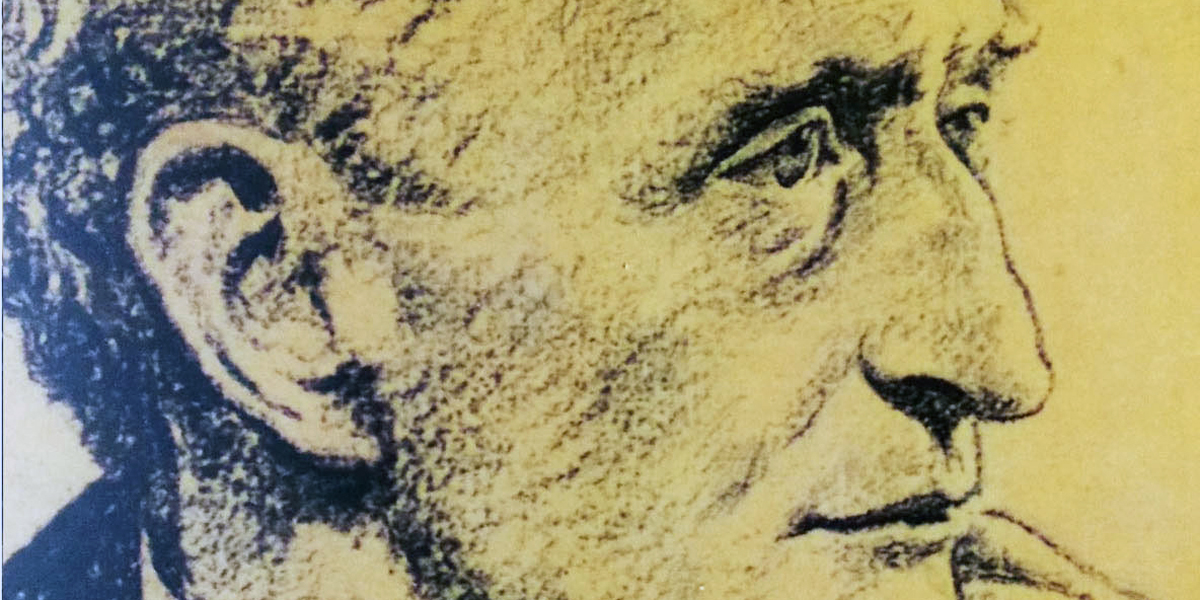The architect behind some of our most stunning buildings, including St Mary’s Dominican Convent on the Falls Road – now part of St Dominic’s – has been celebrated this week with the launch of his complete works of poetry.
The poetry of Pádraic Gregory, who served as a Falls Road councillor for many years after the Second World War, has been brought back to life by his grandson, Patrick Gregory in a stunning collection of his ballads dealing with everything from politics to young love.
Pádraic (born Patrick Bernard) Gregory was a poet, a song lyricist, an ecclesiastic architect, and an art critic.
Born in Belfast in 1886, little is known about his upbringing. His parents emigrated with the young Patrick to Colorado. However, Patrick returned to Ireland to be reared by aunts and relatives.
Having served his apprenticeship as an architect, he was an ardent supporter of the Celtic Revival in the arts and was a founder member of the Ulster Literary Theatre along with such luminaries as Bulmer Hobson, the Morrow Brothers and David Parkhill.
Hugh McCartan vividly recalled the era of rebirth of northern interest in the arts: “Strange portents were abroad in the city of shipyards, factories, foundries and stubborn negations. A wind of idealism was blowing over the arid wastes of political controversy, and tiny flowers, full of hope and promise, began to unfold in the most unexpected places. Not for nothing had Ethna Carbery and Alice Milligan toiled to remind the North of the deep, enduring realities that underlay all the slogans and catch-cries. Just as, on a spring morning, one hears a lone songster in a copse, and then realises that one after another has joined him, so it was in Belfast in those golden days. Every week one heard the name of a new poet, a new playwright, a new painter, a new story-teller.
“Joseph Campbell had published his first volumes of verse. Richard Rowley, Cathal O’Byrne, Pádraic Gregory, John Stevenson and Florence Wilson were writing ballads and lyrics shaped in the national mould. WB Reynolds, a brilliant journalist-musician, was editing a quarterly called Uladh which supported the newly-founded Ulster Literary Theatre and the cultural movement generally. John McBirney’s long supremacy was being challenged by younger artists like Frank McKelvey, the Morrow brothers, Charley Lamb, William Connor, and John Campbell, whose emigration to America deprived Ireland of a superb black-and white artist.
“The Ulster Theatre had produced Davy Parkhill’s ‘The Reformer’ and ‘The Enthusiast’, Rutherford Mayne’s ‘The Turn of the Road’ and ‘The Drone’, and Harry Morrow’s ‘Suzanne and the Sovereigns’ and ‘Thompson in Tirnanogue’. Carl Hardebeck, a Belfast man by adoption, Herbert Hughes and Hamilton Harty were finding inspiration in the folk-music that had survived the withering centuries. Bliss was it in that dawn to be alive, but to be young was very heaven.”
Gregory was an important part of this revival. While practicing as an architect, Gregory was, in effect, a full-time writer and folklorist assiduously collecting and preserving fragments of local yore from all round counties Antrim and Down.
It was these stories which were to dominate his work in a distinctly northern dialect. Indeed, arguably, he could be seen as the first serious writer of the twentieth century to attempt to write in a colloquial version of northern speech. The ballads were by turns humorous, moralistic and tragic; his work showed a distinct fascination for legends of fairyfolk and tales of ghosts and hauntings.
Immensely popular, his poems featured in the local press and were collected in his groundbreaking The Ulster Folk (1912). A further eight volumes followed, as well as acting as editor of The Poems of Seán MacEntee (1916 leader and eventual Tánaiste under Seán Lemass). However, Gregory did not just see himself as folk poet. An ardent nationalist his ballads also celebrated Irish victories and lamented Irish defeats. His historical poems range from the Great O’Neill, Patrick Sarsfield, the Williamite Wars, the United Irishmen and the Famine. Of more contemporary resonance, he also wrote passionate poems applauding the Easter Rising and such figures as Michael Collins in the War of Independence.
However, the poetry was also able to include the plight of ordinary Irishmen caught up in the war.
In the interwar period, his poems and songs were also taken up by other artists with two songs ‘Pádraic the Fiddilier’ and ‘The Ardkeen Boat Song’ being recorded by the legendary John Count McCormack. Indeed, he published two volumes of music, Anglo-Irish Folk Songs, Vols 1 and 2. Gregory’s words were set to music mainly by John Larchet and are still performed today.
Gregory was also leaving his mark upon the north in a more permanent way, becoming one of the main ecclesiastic architects of the period: St Colmcille’s on the Upper Newtownards Road and the chapels at St Mary’s Dominican convent on the Falls Road are only two examples of his work.
After the Second World War, he was to serve as a Nationalist councillor for the Falls Ward on Belfast City Council.
He was awarded an honorary doctorate for his ecclesiastic work by University College Dublin. He died in 1962.
Check out http://www.laganpress.co/publications/view/padraic-gregory/complete-ballads






